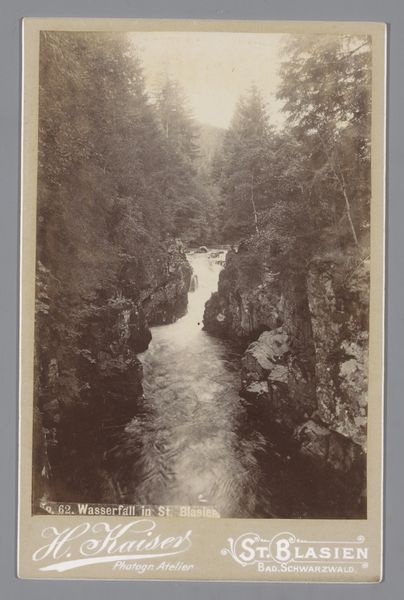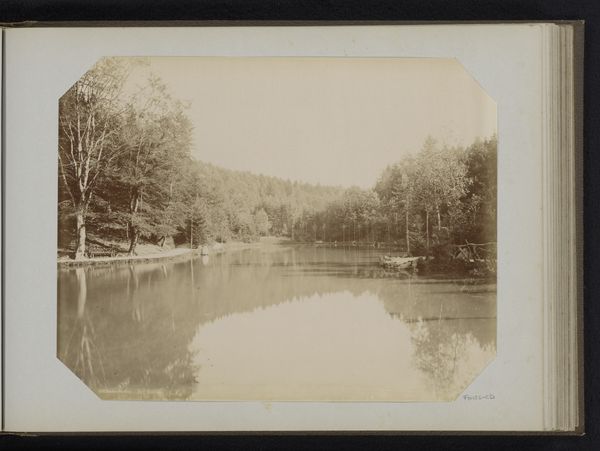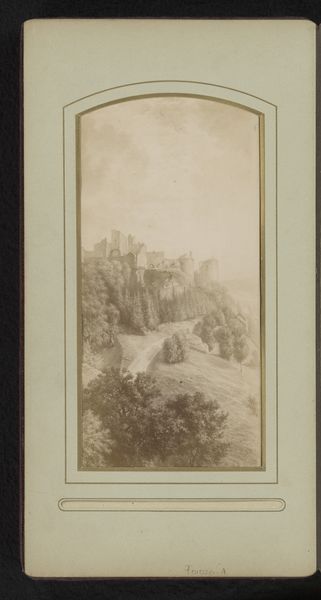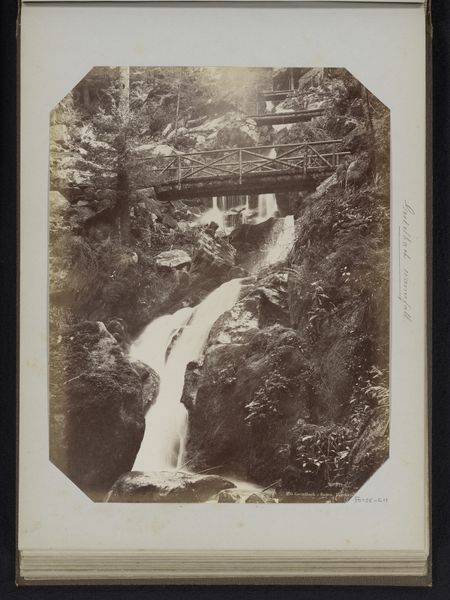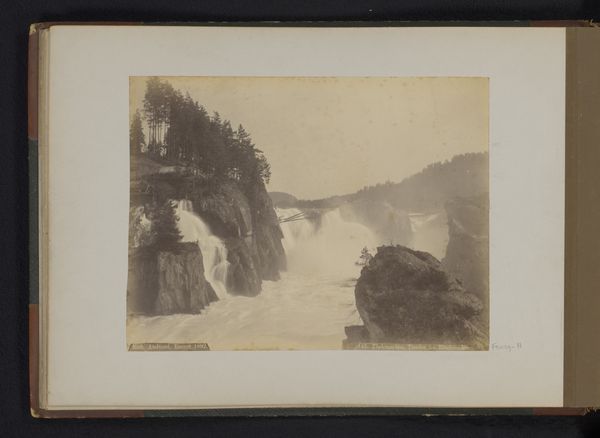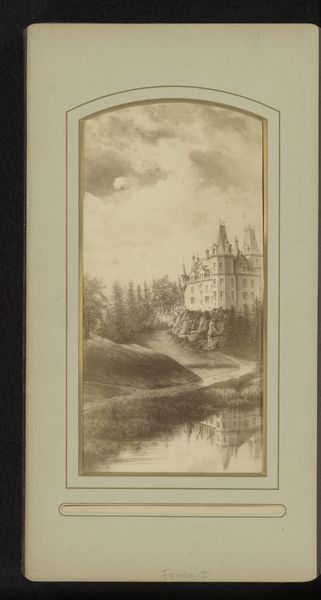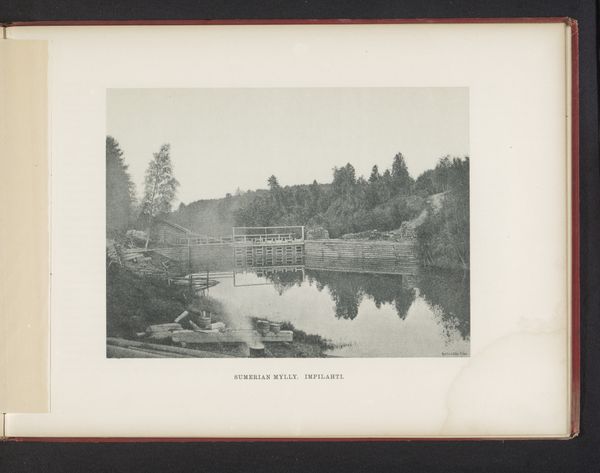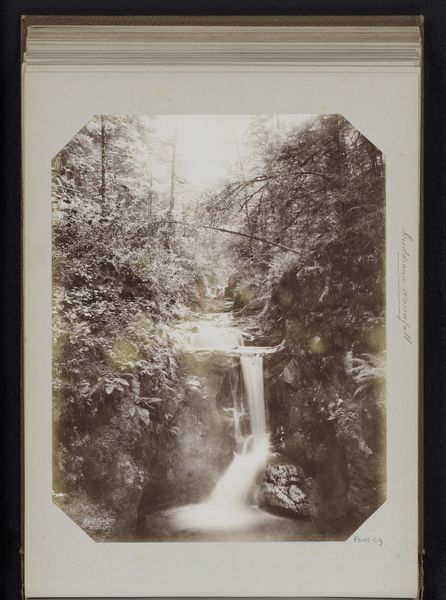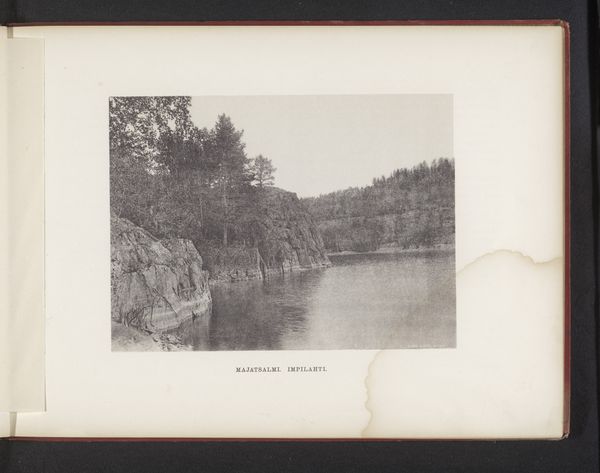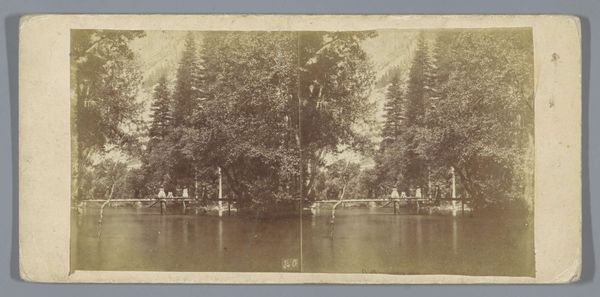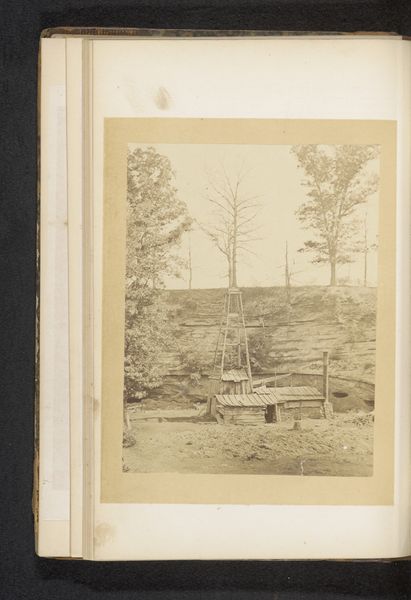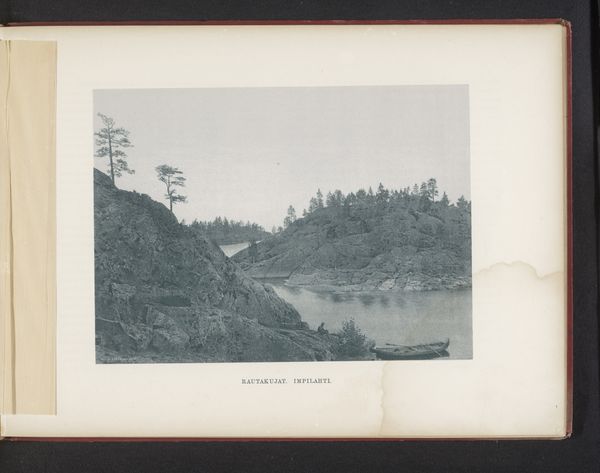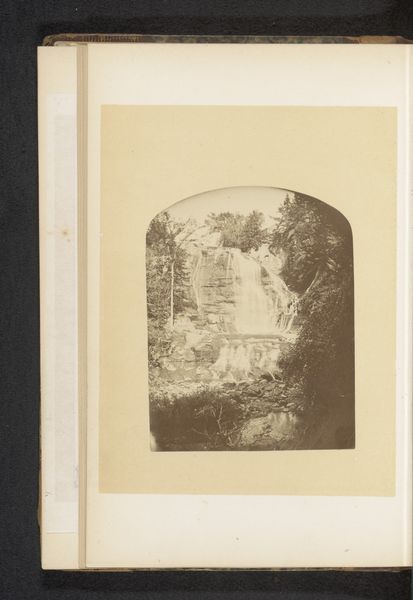
photography
#
still-life-photography
#
landscape
#
photography
#
realism
Dimensions: height 62 mm, width 100 mm
Copyright: Rijks Museum: Open Domain
Editor: So, this is "Sluizen bij Trollhättan," a photograph from 1872-1876. I’m immediately drawn to the stillness of the water. It feels almost like a mirror reflecting the heavy stonework of the locks. What stands out to you in this piece? Curator: The photograph’s almost sepia tone gives it a sense of looking back in time. The locks themselves, a sort of gate, hold symbolic meaning, don’t they? Locks have always represented control, boundaries, perhaps even the management of progress versus nature. Editor: That makes sense. I hadn't thought about the implications of a lock like that. What kind of progress are we talking about here? Curator: The locks at Trollhättan controlled water traffic, a key component to industrial progress in Sweden at the time. Look closely at how the photographer framed nature almost holding back progress; what kind of story do you think that visual arrangement tells us about how humanity in 1870’s was thinking about nature? Editor: I guess there's an attempt to negotiate power and resources in a growing country. I wonder about the implications for the natural landscape...it doesn't seem like an equal conversation, at all. Curator: Indeed! And this photograph functions as more than just a pretty picture. What is a key component for the development of realism within photography that allows to highlight, or veil, realities? Editor: Technique and subject matter. Together, in combination. This photo really captured that negotiation in a powerful way. Thank you! Curator: You are most welcome. The dialogue of symbolism and intent is truly captivating!
Comments
No comments
Be the first to comment and join the conversation on the ultimate creative platform.
